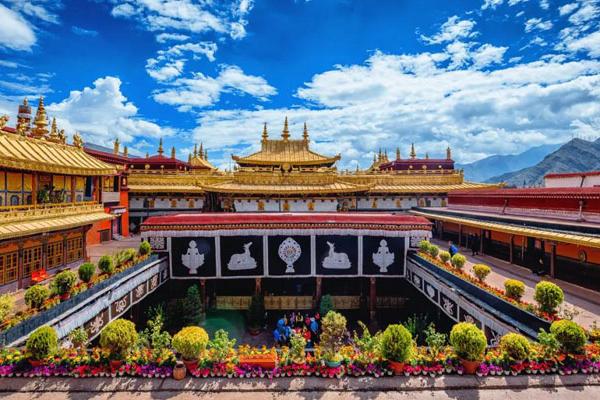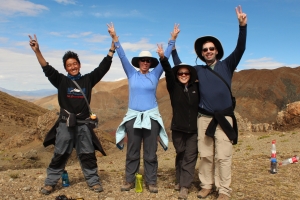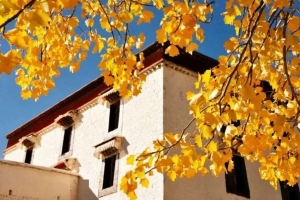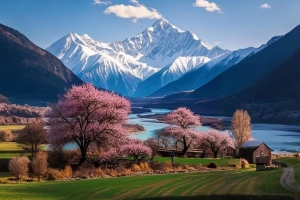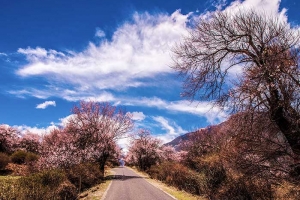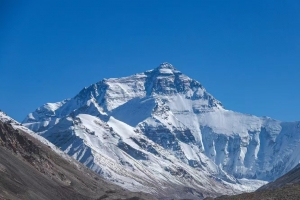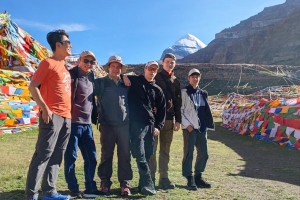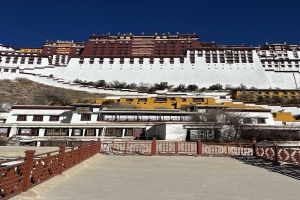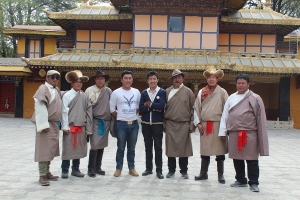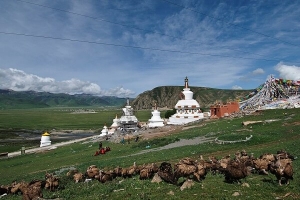Tibet is not just a land of breathtaking landscapes but also a spiritual heartland where centuries-old monasteries and temples shape the daily lives of its people. From the bustling streets of Lhasa to the remote wilderness of Mount Kailash, these sacred sites are testaments to Tibetan Buddhism’s enduring influence. This guide takes you through the most revered temples and monasteries across Tibet’s key regions, offering a glimpse into their history, significance, and timeless beauty.
Temples and Monasteries in Lhasa
Lhasa, Tibet’s capital, is the spiritual and cultural heart of the region. Home to some of the most sacred Buddhist sites, it attracts countless pilgrims who journey here to pray, prostrate, and seek enlightenment.
Jokhang Temple: The Heart of Tibetan Buddhism
Jokhang Temple is the spiritual center of Tibet and its most revered pilgrimage site. Built in the 7th century by King Songtsen Gampo, it houses the sacred Jowo Shakyamuni statue, a life-sized image of Buddha believed to have been blessed by the historical Buddha himself. Pilgrims from across Tibet prostrate themselves along the Barkhor Street kora, circling the temple while murmuring prayers and spinning prayer wheels.
Potala Palace: A Monument of Devotion
The former winter residence of the Dalai Lama, Potala Palace dominates Lhasa’s skyline with its towering white and red walls. It contains thousands of rooms adorned with intricate murals, golden stupas, and ancient scriptures. Walking through its sacred halls, visitors can sense the deep religious and political history that has shaped Tibet for centuries.
The Temple of Zhaji Ram: Tibet’s Wealth Temple
Known as the Wealth Temple of Tibet, the Temple of Zhaji Ram is a hidden treasure in Lhasa. It is dedicated to deities associated with prosperity, drawing those who seek blessings for financial success. Pilgrims light butter lamps and perform rituals to invoke good fortune, making this temple a fascinating insight into Tibetan Buddhism’s spiritual and material balance.
Sera Monastery: The Home of Monastic Debate
Lhasa is not only home to sacred temples but also great centers of learning. Sera Monastery is famous for its lively philosophical debates, where monks engage in animated discussions, clapping their hands as they challenge one another’s reasoning. As one of Tibet’s key monastic universities, it continues to train monks in Buddhist philosophy and scripture.
Drepung Monastery: The Largest Monastery in Tibet
Once the largest monastery in Tibet, Drepung was a major center for Buddhist learning and the traditional seat of the Dalai Lamas before the construction of the Potala Palace. Its vast assembly halls and meditation chambers remain an important spiritual site.
Temples and Monasteries in Shigatse
Shigatse, Tibet’s second-largest city, is an important religious and political center. It is home to the seat of the Panchen Lama, one of the highest-ranking figures in Tibetan Buddhism.
Tashilunpo Monastery: The Seat of the Panchen Lama
As the traditional seat of the Panchen Lama, Tashilunpo Monastery is one of the most significant religious sites in Tibet. Founded in the 15th century, it houses the world’s largest gilded statue of Maitreya, the Future Buddha. The monastery remains an active center of worship, attracting pilgrims and scholars alike.

Sakya Monastery: The Stronghold of Tibetan Buddhism
Located outside Shigatse, Sakya Monastery is distinct for its Mongolian-influenced architecture, with massive grey walls that set it apart from other Tibetan monasteries. It was once the political and spiritual hub of the Sakya School of Tibetan Buddhism and still houses an extensive collection of ancient scriptures and murals.
Temples and Monasteries Near Mount Kailash
The remote and sacred Mount Kailash is considered the ultimate pilgrimage destination for four major religions: Buddhism, Hinduism, Jainism, and Bon. Pilgrims from around the world embark on the challenging kora (circumambulation) to cleanse their past sins and seek spiritual enlightenment.
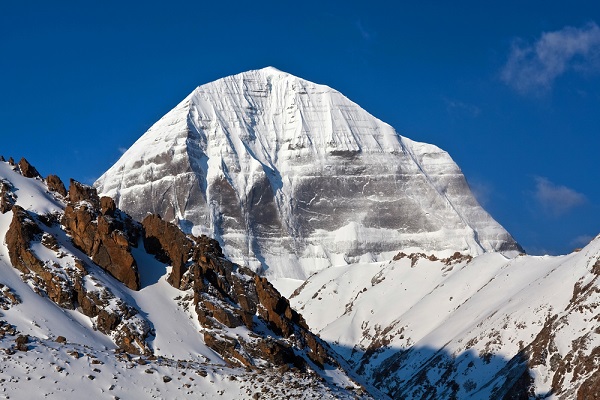
Mount Kailash: The Ultimate Pilgrimage Destination
Sacred to Buddhists, Hindus, Jains, and Bon practitioners, Mount Kailash is a site of deep spiritual significance. Pilgrims undertake the Kailash Kora, a 52-kilometer circumambulation believed to cleanse karma and bring enlightenment. Along the route, prayer flags flutter, and small monasteries offer respite to those on this demanding yet sacred journey.
Dirapuk and Zutulpuk Monasteries: Pilgrim Sanctuaries
Nestled along the Kailash pilgrimage route, Dirapuk Monastery offers breathtaking views of the mountain, serving as an overnight stop for pilgrims. Further along the kora, Zutulpuk Monastery is built around a meditation cave where Milarepa, Tibet’s great yogi, is said to have meditated.
Temples and Monasteries Near Everest
The Everest region is not only home to the world’s highest peak but also to monastic sites that offer spiritual guidance and shelter to those traveling through this extreme landscape.
Rongbuk Monastery: The World’s Highest Monastery
Standing at an altitude of 4,980 meters, Rongbuk Monastery is the highest monastery on Earth. It offers unparalleled views of Mount Everest’s northern face, making it a spiritual and visual wonder. Founded by the Nyingma sect, it remains a place of meditation and prayer amid the world’s highest peaks.
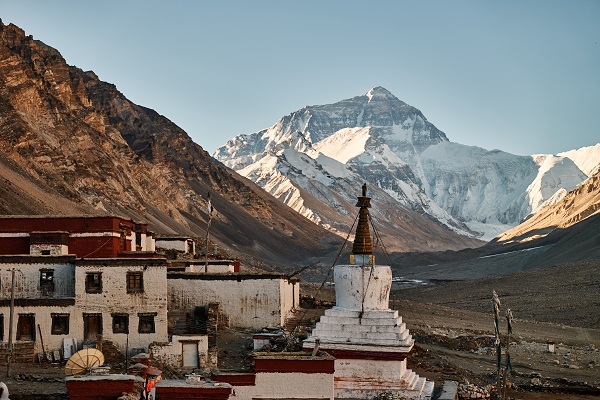
Essential Travel Tips
- Best Time to Visit: The ideal months are May to October, when Tibet’s weather is most favorable.
- Acclimatization: Spend a few days in Lhasa to adjust to the altitude before traveling to higher regions.
- Local Etiquette: Always walk clockwise around religious sites, dress modestly, and refrain from touching sacred objects without permission.
- Permits and Guides: Tibet requires special travel permits, and a local guide is often mandatory for foreign visitors.
Tibet’s temples and monasteries are more than architectural marvels—they are living testaments to a rich spiritual heritage that continues to shape the land and its people. Whether you find yourself standing before the golden rooftops of Jokhang Temple, watching monks debate at Sera Monastery, or trekking around Mount Kailash, these experiences offer a profound connection to Tibet’s spiritual soul. A journey through these sacred sites is not just a visit but a pilgrimage into the heart of Tibetan Buddhism.

